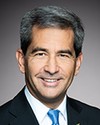That's a fantastic question.
There are a couple of things. I'll go back to “threat” in terms of capability and intent. If a nation has intent but no capability, then you can deal with it. If a nation has significant capability and potentially no intent, how do you continue to monitor that over the fullness of time?
In terms of our preparation and our readiness, as I indicated in my opening remarks, the Halifax class modernization, which remains on budget and on time—very few people hear about it, probably because it is on budget and on time—has provided us with exceptional capability for the navy. As Commodore Donovan was indicating, when we put out the request for proposal, we did so looking ahead at those future threats, recognizing that with the timelines we're dealing with, we'll be delivering cutting-edge technology and delivering on our requirements to go forward.
Going back to understanding and how we can deal with potential threats moving forward, it wasn't by accident this last summer that Admiral Newton led Cutlass Fury, which was basically NATO participation—although it wasn't sanctioned by NATO—in terms of understanding the challenges and demands of theatre anti-submarine warfare and making sure there was, once again.... It's back to making sure that the linkages and the interoperability between the air forces, the surface forces, and the submarine forces are understood by all.
As we look into the other aspects of the world, we see HMCS Vancouver currently deployed in the Indo-Asia-Pacific region. In the Atlantic, we have the NATO alliance, which we know well, but those procedures that we know intimately well don't currently exist in the Pacific. As the minister has indicated, we need to be more persistent in the Indo-Asia-Pacific. The chief has given a little more clarification in terms of what we'll do there, because we need to establish those relationships, those partnerships, and those friendships that will be crucial to operating in areas of the world where we may conceivably be deployed.
You'll see us developing that trust over the next two to three years. As you have heard many officers say, in times of crisis or conflict you can always surge forces, but you can't always surge trust. Right now, the trust that's required in terms of enabling and sustaining those forces will be essential, as we look to where we may be deployed as first responders in the future.





